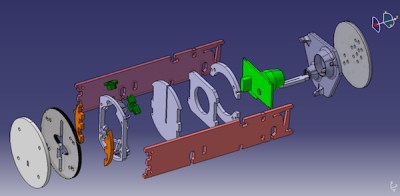For his Hackaday Prize entry, [MIPS ARMSTRONG] is working on an open-source terrarium that will be one of the fastest way to grow foodstuffs or other edible greens. He’s calling it Project EDEN, and it’s shaping up to be one of the most advanced homebrew horticultural devices ever made.
There are a few things that make this indoor greenhouse unique. The most obvious is the incredible number of LEDs used as grow lights. [MIPS] is using 900 Watts worth of Royal Blue and Deep Red LEDs. To water these plants, [MIPS] is taking a cue from NASA and building a High Pressure Aeroponics system – a device that shoots droplets of water only 50 microns in diameter directly onto the roots of the plants.
One of the more interesting aspects of EDEN is the CO2 system. The bulk of plant biomass – like humans – comes from carbon, and plants get their carbon from the atmosphere. Studies have shown that increasing the concentration of CO2 in a grow chamber can increase plant growth. There is a limit before CO2 becomes toxic to plants, so [MIPS] will have to keep a close eye on the CO2 levels with gas sensors.
With high-pressure watering, a CO2 system, and an amazing array of LEDs, this is one of the most advanced homebrew horticulture projects on the planet. It’s also a great fit for this year’s Hackaday prize theme of ‘build something that matters’, and we can’t wait to see [MIPS]’s future developments of his awesome aeroponic terrarium.























